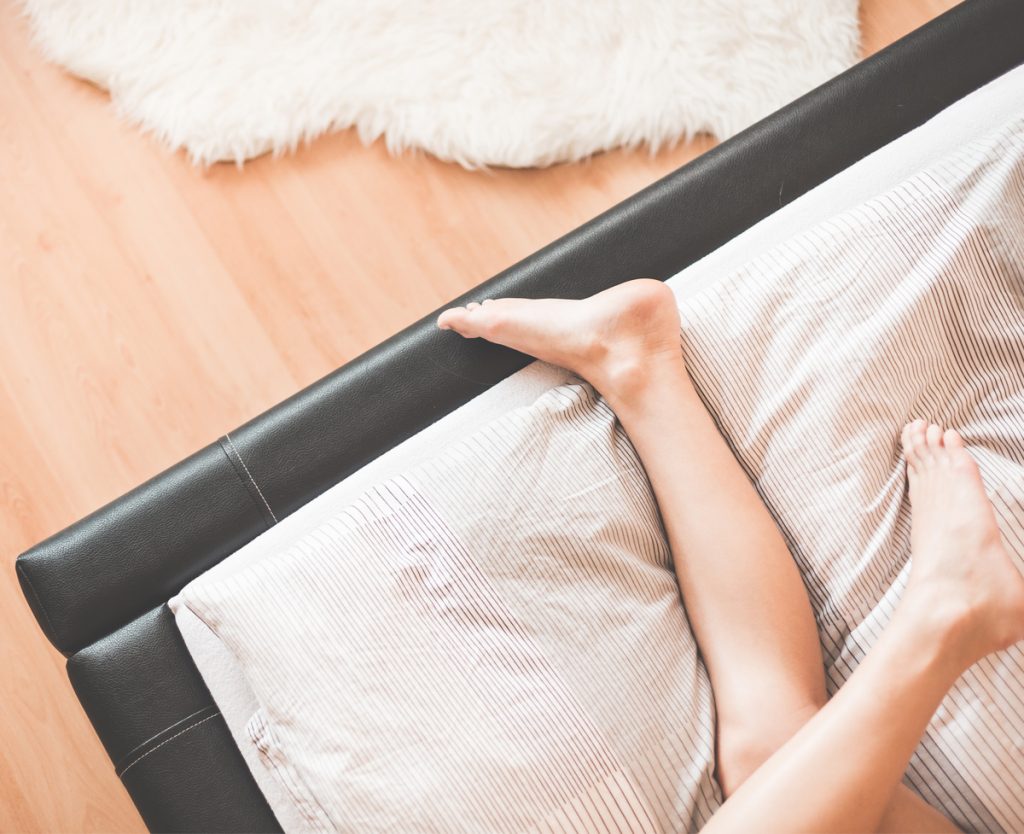Restless Legs Syndrome (RLS), also known as Willis-Ekbom disease, is a neurological condition that causes an uncontrollable urge to move the legs, typically in the evening or at night. This often disrupts sleep, leading to fatigue, irritability, and reduced quality of life. While medication is commonly prescribed, many people seek natural, non-pharmaceutical solutions to manage symptoms without side effects.
What is Restless Legs Syndrome?
RLS is characterised by tingling, crawling, or pulling sensations in the legs, often accompanied by an overwhelming need to move them. These symptoms usually worsen at rest and improve with movement. RLS can be triggered by factors such as iron deficiency, stress, pregnancy, or certain medical conditions like kidney disease and diabetes.
Effective Natural Remedies for RLS
If you’re looking for drug-free ways to manage restless legs, the following non-pharmaceutical strategies may provide relief:
1. Improve Your Sleep Hygiene
Poor sleep habits can exacerbate RLS symptoms. Try to:
-
Maintain a consistent sleep schedule
-
Avoid screens before bed
-
Create a dark, quiet, and cool sleep environment
-
Wind down with calming activities like reading or meditation
2. Stretching and Gentle Exercise
Low-impact exercises such as walking, swimming, yoga, or tai chi can help reduce RLS symptoms. Focus on:
-
Regular stretching, particularly before bed
-
Calf, hamstring, and lower back stretches
-
Avoiding vigorous activity too close to bedtime
3. Warm or Cold Therapy
Temperature therapy can soothe leg sensations:
-
Take a warm bath before bed
-
Apply a warm or cold compress to the affected areas
-
Alternate between heat and cold to find what works best for your body
4. Massage and Acupressure
Massaging the legs can increase circulation and relax muscles. Acupressure, a traditional Chinese therapy, may also help stimulate specific pressure points that relieve discomfort.
5. Reduce Stimulants
Cutting back on caffeine, nicotine, and alcohol—particularly in the afternoon and evening—can significantly ease RLS symptoms. These substances can interfere with sleep and increase restlessness.
6. Supplement Wisely
Deficiencies in certain nutrients are linked to RLS. Consider:
-
Iron: Low iron levels are a major contributor. Always test levels before supplementing.
-
Magnesium: Supports muscle relaxation and nerve function.
-
Folate and Vitamin B12: Aid in nerve health and may reduce symptoms.
Always consult a healthcare provider before beginning supplements.
7. Stay Hydrated
Dehydration can worsen muscle cramps and nerve sensitivity. Drink plenty of water throughout the day, but taper off before bedtime to avoid nocturnal trips to the bathroom.
8. Try a Weighted Blanket
Weighted blankets provide deep pressure stimulation, which can help calm the nervous system and reduce leg movement during sleep.
9. Practice Mindfulness and Stress Reduction
Stress is a known trigger for RLS. Mindfulness meditation, deep breathing exercises, or gentle relaxation routines can calm the nervous system and reduce the frequency of symptoms.
Lifestyle Tips for Managing RLS Long-Term
-
Keep a symptom journal to identify patterns and triggers.
-
Avoid prolonged sitting or standing when possible.
-
Use a standing desk or take frequent walking breaks if you work at a computer.
-
Wear compression socks to improve circulation during the day.
When to See a Doctor
If RLS is significantly impacting your quality of life or if symptoms worsen despite lifestyle changes, it’s important to consult a medical professional. They can rule out underlying conditions, assess iron levels, and guide further treatment options.
